-
EXECUTIVE SUMMARY
-
MARKET INTRODUCTION
-
Definition
- Research Objective
- Assumptions
- Limitations
-
2.2.
-
Scope of the Study
-
3.
-
RESEARCH METHODOLOGY
-
Overview
-
Data Mining
-
Secondary Research
- Primary Interviews and Information Gathering Process
-
3.4.
-
Primary Research
-
3.4.2.
-
Breakdown of Primary Respondents
-
Forecasting Model
-
Market Size Estimation
- Top-Down Approach
-
3.6.1.
-
Bottom-Up Approach
-
Data Triangulation
-
3.8.
-
Validation
-
MARKET DYNAMICS
-
Overview
-
Drivers
-
Restraints
-
4.4.
-
Opportunities
-
MARKET FACTOR ANALYSIS
-
Value Chain Analysis
- Bargaining Power of Suppliers
- Threat of New Entrants
- Threat
- Intensity of Rivalry
-
5.2.
-
Porter’s Five Forces Analysis
-
5.2.2.
-
Bargaining Power of Buyers
-
of Substitutes
-
COVID-19 Impact Analysis
- Regional Impact
- Opportunity and Threat
-
5.3.1.
-
Market Impact Analysis
-
Analysis
-
GLOBAL MILITARY & DEFENSE GROUND SUPPORT EQUIPMENT MARKET, BY TYPE
-
6.1.
-
Overview
-
Fixed
-
Mobile
-
GLOBAL MILITARY & DEFENSE GROUND SUPPORT
-
EQUIPMENT MARKET, BY POWER TYPE
-
Overview
-
Diesel
-
Electric
-
7.4.
-
Hybrid
-
GLOBAL MILITARY & DEFENSE GROUND SUPPORT EQUIPMENT MARKET, BY AIRCRAFT
-
8.1.
-
Overview
-
Fighter Jet
-
Transport Aircraft
-
Special Mission Aircraft
-
9.
-
GLOBAL MILITARY & DEFENSE GROUND SUPPORT EQUIPMENT MARKET, BY EQUIPMENT
-
9.1.
-
Overview
-
Ground Power Unit (GPU)
-
Air Start Unit (ASU)
-
Air Conditioning
-
Unit (ACU)
-
Tow Tractors
-
Deicers
-
Others
-
GLOBAL
-
MILITARY & DEFENSE GROUND SUPPORT EQUIPMENT MARKET, BY REGION
-
Overview
- US
- Canada
-
10.1.
-
North America
-
Europe
- Germany
- UK
- Italy
- Spain
- Rest of Europe
- China
- India
- Japan
- South
- Australia
- Rest of Asia-Pacific
-
10.2.2.
-
France
-
10.3.
-
Asia-Pacific
-
Korea
-
Rest of the World
- Africa
- Latin America
-
10.4.1.
-
Middle East
-
COMPETITIVE
-
LANDSCAPE
-
Overview
-
Competitive Analysis
-
Market Share Analysis
-
11.4.
-
Major Growth Strategy in the Global Military & Defense Ground Support Equipment
-
Market,
-
Competitive Benchmarking
-
Leading Players in Terms of Number
- New Product Launch/Service Deployment
- Joint Ventures
-
of Developments in the Global Military & Defense Ground Support Equipment Market,
-
11.7.
-
Key developments and Growth Strategies
-
11.7.2.
-
Merger & Acquisitions
-
Major Players Financial
- Sales & Operating Income, 2024
- Major Players R&D
-
Matrix
-
Expenditure. 2024
-
COMPANY PROFILES
-
Air+MAK Industries Inc.
- Financial Overview
- Products Offered
- SWOT Analysis
- Key Strategies
- Company Overview
- Financial Overview
- Products Offered
- SWOT Analysis
- Key Strategies
- Company Overview
- Financial Overview
- Products Offered
- SWOT Analysis
- Key Strategies
- Company Overview
- Financial Overview
- Products Offered
- SWOT Analysis
- Key Strategies
- Company Overview
- Financial Overview
- Key Developments
- SWOT Analysis
-
12.1.1.
-
Company Overview
-
12.1.4.
-
Key Developments
-
12.2.
-
ATEC, Inc.
-
12.2.4.
-
Key Developments
-
12.3.
-
Cavotec SA
-
12.3.4.
-
Key Developments
-
12.4.
-
GATE GSE
-
12.4.4.
-
Key Developments
-
12.5.
-
Rheinmetall AG
-
12.5.3.
-
Products Offered
-
12.5.6.
-
Key Strategies
-
Tronair Inc.
- Company Overview
- Financial
- Products Offered
- Key Developments
- SWOT Analysis
-
Overview
-
12.6.6.
-
Key Strategies
-
Unitron, LP.
- Company Overview
- Financial
- Products Offered
- Key Developments
- SWOT Analysis
-
Overview
-
12.7.6.
-
Key Strategies
-
Hydraulics International Inc.
- Company Overview
- Products Offered
- Key Developments
- Key Strategies
-
12.8.2.
-
Financial Overview
-
12.8.5.
-
SWOT Analysis
-
ITW GSE ApS
- Company
- Financial Overview
- Products Offered
- Key
- SWOT Analysis
- Key Strategies
- Company Overview
- Financial Overview
- Key Developments
- SWOT Analysis
-
Overview
-
Developments
-
12.10.
-
JBT Corporation
-
12.10.3.
-
Products Offered
-
12.10.6.
-
Key Strategies
-
APPENDIX
-
References
-
Related Reports
-
-
LIST
-
OF TABLES
-
GLOBAL MILITARY & DEFENSE GROUND SUPPORT EQUIPMENT MARKET,
-
SYNOPSIS, 2025-2034
-
GLOBAL MILITARY & DEFENSE GROUND SUPPORT EQUIPMENT
-
MARKET, ESTIMATES & FORECAST, 2025-2034 (USD BILLION)
-
GLOBAL MILITARY &
-
DEFENSE GROUND SUPPORT EQUIPMENT MARKET, BY TYPE, 2025-2034 (USD BILLION)
-
TABLE
-
GLOBAL MILITARY & DEFENSE GROUND SUPPORT EQUIPMENT MARKET, BY POWER TYPE,
-
GLOBAL MILITARY & DEFENSE GROUND SUPPORT
-
EQUIPMENT MARKET, BY AIRCRAFT, 2025-2034 (USD BILLION)
-
GLOBAL MILITARY &
-
DEFENSE GROUND SUPPORT EQUIPMENT MARKET, BY EQUIPMENT, 2025-2034 (USD BILLION)
-
TABLE
-
NORTH AMERICA: MILITARY & DEFENSE GROUND SUPPORT EQUIPMENT MARKET, BY TYPE,
-
NORTH AMERICA: MILITARY & DEFENSE GROUND
-
SUPPORT EQUIPMENT MARKET, BY POWER TYPE, 2025-2034 (USD BILLION)
-
NORTH
-
AMERICA: MILITARY & DEFENSE GROUND SUPPORT EQUIPMENT MARKET, BY AIRCRAFT, 2025-2034
-
(USD BILLION)
-
NORTH AMERICA: MILITARY & DEFENSE GROUND SUPPORT
-
EQUIPMENT MARKET, BY EQUIPMENT, 2025-2034 (USD BILLION)
-
US: MILITARY & DEFENSE
-
GROUND SUPPORT EQUIPMENT MARKET, BY TYPE, 2025-2034 (USD BILLION)
-
US:
-
MILITARY & DEFENSE GROUND SUPPORT EQUIPMENT MARKET, BY POWER TYPE, 2025-2034
-
(USD BILLION)
-
US: MILITARY & DEFENSE GROUND SUPPORT EQUIPMENT
-
MARKET, BY AIRCRAFT, 2025-2034 (USD BILLION)
-
US: MILITARY & DEFENSE
-
GROUND SUPPORT EQUIPMENT MARKET, BY EQUIPMENT, 2025-2034 (USD BILLION)
-
TABLE
-
CANADA: MILITARY & DEFENSE GROUND SUPPORT EQUIPMENT MARKET, BY TYPE, 2025-2034
-
(USD BILLION)
-
CANADA: MILITARY & DEFENSE GROUND SUPPORT EQUIPMENT
-
MARKET, BY POWER TYPE, 2025-2034 (USD BILLION)
-
CANADA: MILITARY &
-
DEFENSE GROUND SUPPORT EQUIPMENT MARKET, BY AIRCRAFT, 2025-2034 (USD BILLION)
-
TABLE
-
CANADA: MILITARY & DEFENSE GROUND SUPPORT EQUIPMENT MARKET, BY EQUIPMENT,
-
EUROPE: MILITARY & DEFENSE GROUND SUPPORT
-
EQUIPMENT MARKET, BY TYPE, 2025-2034 (USD BILLION)
-
EUROPE: MILITARY &
-
DEFENSE GROUND SUPPORT EQUIPMENT MARKET, BY POWER TYPE, 2025-2034 (USD BILLION)
-
TABLE
-
EUROPE: MILITARY & DEFENSE GROUND SUPPORT EQUIPMENT MARKET, BY AIRCRAFT, 2025-2034
-
(USD BILLION)
-
EUROPE: MILITARY & DEFENSE GROUND SUPPORT EQUIPMENT
-
MARKET, BY EQUIPMENT, 2025-2034 (USD BILLION)
-
GERMANY: MILITARY &
-
DEFENSE GROUND SUPPORT EQUIPMENT MARKET, BY TYPE, 2025-2034 (USD BILLION)
-
TABLE
-
GERMANY: MILITARY & DEFENSE GROUND SUPPORT EQUIPMENT MARKET, BY POWER TYPE,
-
GERMANY: MILITARY & DEFENSE GROUND SUPPORT
-
EQUIPMENT MARKET, BY AIRCRAFT, 2025-2034 (USD BILLION)
-
GERMANY: MILITARY &
-
DEFENSE GROUND SUPPORT EQUIPMENT MARKET, BY EQUIPMENT, 2025-2034 (USD BILLION)
-
TABLE
-
FRANCE: MILITARY & DEFENSE GROUND SUPPORT EQUIPMENT MARKET, BY TYPE, 2025-2034
-
(USD BILLION)
-
FRANCE: MILITARY & DEFENSE GROUND SUPPORT EQUIPMENT
-
MARKET, BY POWER TYPE, 2025-2034 (USD BILLION)
-
FRANCE: MILITARY &
-
DEFENSE GROUND SUPPORT EQUIPMENT MARKET, BY AIRCRAFT, 2025-2034 (USD BILLION)
-
TABLE
-
FRANCE: MILITARY & DEFENSE GROUND SUPPORT EQUIPMENT MARKET, BY EQUIPMENT,
-
ITALY: MILITARY & DEFENSE GROUND SUPPORT
-
EQUIPMENT MARKET, BY TYPE, 2025-2034 (USD BILLION)
-
ITALY: MILITARY &
-
DEFENSE GROUND SUPPORT EQUIPMENT MARKET, BY POWER TYPE, 2025-2034 (USD BILLION)
-
TABLE
-
ITALY: MILITARY & DEFENSE GROUND SUPPORT EQUIPMENT MARKET, BY AIRCRAFT, 2025-2034
-
(USD BILLION)
-
ITALY: MILITARY & DEFENSE GROUND SUPPORT EQUIPMENT
-
MARKET, BY EQUIPMENT, 2025-2034 (USD BILLION)
-
SPAIN: MILITARY &
-
DEFENSE GROUND SUPPORT EQUIPMENT MARKET, BY TYPE, 2025-2034 (USD BILLION)
-
TABLE
-
SPAIN: MILITARY & DEFENSE GROUND SUPPORT EQUIPMENT MARKET, BY POWER TYPE,
-
SPAIN: MILITARY & DEFENSE GROUND SUPPORT
-
EQUIPMENT MARKET, BY AIRCRAFT, 2025-2034 (USD BILLION)
-
SPAIN: MILITARY &
-
DEFENSE GROUND SUPPORT EQUIPMENT MARKET, BY EQUIPMENT, 2025-2034 (USD BILLION)
-
TABLE
-
UK: MILITARY & DEFENSE GROUND SUPPORT EQUIPMENT MARKET, BY TYPE, 2025-2034
-
(USD BILLION)
-
UK: MILITARY & DEFENSE GROUND SUPPORT EQUIPMENT
-
MARKET, BY POWER TYPE, 2025-2034 (USD BILLION)
-
UK: MILITARY & DEFENSE
-
GROUND SUPPORT EQUIPMENT MARKET, BY AIRCRAFT, 2025-2034 (USD BILLION)
-
TABLE
-
UK: MILITARY & DEFENSE GROUND SUPPORT EQUIPMENT MARKET, BY EQUIPMENT, 2025-2034
-
(USD BILLION)
-
REST OF EUROPE: MILITARY & DEFENSE GROUND SUPPORT
-
EQUIPMENT MARKET, BY TYPE, 2025-2034 (USD BILLION)
-
REST OF EUROPE: MILITARY
-
& DEFENSE GROUND SUPPORT EQUIPMENT MARKET, BY POWER TYPE, 2025-2034 (USD BILLION)
-
TABLE
-
REST OF EUROPE: MILITARY & DEFENSE GROUND SUPPORT EQUIPMENT MARKET, BY AIRCRAFT,
-
REST OF EUROPE: MILITARY & DEFENSE
-
GROUND SUPPORT EQUIPMENT MARKET, BY EQUIPMENT, 2025-2034 (USD BILLION)
-
TABLE
-
ASIA-PACIFIC: MILITARY & DEFENSE GROUND SUPPORT EQUIPMENT MARKET, BY TYPE,
-
ASIA-PACIFIC: MILITARY & DEFENSE GROUND
-
SUPPORT EQUIPMENT MARKET, BY POWER TYPE, 2025-2034 (USD BILLION)
-
ASIA-PACIFIC:
-
MILITARY & DEFENSE GROUND SUPPORT EQUIPMENT MARKET, BY AIRCRAFT, 2025-2034 (USD
-
BILLION)
-
ASIA-PACIFIC: MILITARY & DEFENSE GROUND SUPPORT EQUIPMENT
-
MARKET, BY EQUIPMENT, 2025-2034 (USD BILLION)
-
JAPAN: MILITARY &
-
DEFENSE GROUND SUPPORT EQUIPMENT MARKET, BY TYPE, 2025-2034 (USD BILLION)
-
TABLE
-
JAPAN: MILITARY & DEFENSE GROUND SUPPORT EQUIPMENT MARKET, BY POWER TYPE,
-
JAPAN: MILITARY & DEFENSE GROUND SUPPORT
-
EQUIPMENT MARKET, BY AIRCRAFT, 2025-2034 (USD BILLION)
-
JAPAN: MILITARY &
-
DEFENSE GROUND SUPPORT EQUIPMENT MARKET, BY EQUIPMENT, 2025-2034 (USD BILLION)
-
TABLE
-
CHINA: MILITARY & DEFENSE GROUND SUPPORT EQUIPMENT MARKET, BY TYPE, 2025-2034
-
(USD BILLION)
-
CHINA: MILITARY & DEFENSE GROUND SUPPORT EQUIPMENT
-
MARKET, BY POWER TYPE, 2025-2034 (USD BILLION)
-
CHINA: MILITARY &
-
DEFENSE GROUND SUPPORT EQUIPMENT MARKET, BY AIRCRAFT, 2025-2034 (USD BILLION)
-
TABLE
-
CHINA: MILITARY & DEFENSE GROUND SUPPORT EQUIPMENT MARKET, BY EQUIPMENT,
-
INDIA: MILITARY & DEFENSE GROUND SUPPORT
-
EQUIPMENT MARKET, BY TYPE, 2025-2034 (USD BILLION)
-
INDIA: MILITARY &
-
DEFENSE GROUND SUPPORT EQUIPMENT MARKET, BY POWER TYPE, 2025-2034 (USD BILLION)
-
TABLE
-
INDIA: MILITARY & DEFENSE GROUND SUPPORT EQUIPMENT MARKET, BY AIRCRAFT, 2025-2034
-
(USD BILLION)
-
INDIA: MILITARY & DEFENSE GROUND SUPPORT EQUIPMENT
-
MARKET, BY EQUIPMENT, 2025-2034 (USD BILLION)
-
AUSTRALIA: MILITARY &
-
DEFENSE GROUND SUPPORT EQUIPMENT MARKET, BY TYPE, 2025-2034 (USD BILLION)
-
TABLE
-
AUSTRALIA: MILITARY & DEFENSE GROUND SUPPORT EQUIPMENT MARKET, BY POWER TYPE,
-
AUSTRALIA: MILITARY & DEFENSE GROUND
-
SUPPORT EQUIPMENT MARKET, BY AIRCRAFT, 2025-2034 (USD BILLION)
-
AUSTRALIA:
-
MILITARY & DEFENSE GROUND SUPPORT EQUIPMENT MARKET, BY EQUIPMENT, 2025-2034
-
(USD BILLION)
-
SOUTH KOREA: MILITARY & DEFENSE GROUND SUPPORT
-
EQUIPMENT MARKET, BY TYPE, 2025-2034 (USD BILLION)
-
SOUTH KOREA: MILITARY
-
& DEFENSE GROUND SUPPORT EQUIPMENT MARKET, BY POWER TYPE, 2025-2034 (USD BILLION)
-
TABLE
-
SOUTH KOREA: MILITARY & DEFENSE GROUND SUPPORT EQUIPMENT MARKET, BY AIRCRAFT,
-
SOUTH KOREA: MILITARY & DEFENSE GROUND
-
SUPPORT EQUIPMENT MARKET, BY EQUIPMENT, 2025-2034 (USD BILLION)
-
REST
-
OF ASIA-PACIFIC: MILITARY & DEFENSE GROUND SUPPORT EQUIPMENT MARKET, BY TYPE,
-
REST OF ASIA-PACIFIC: MILITARY & DEFENSE
-
GROUND SUPPORT EQUIPMENT MARKET, BY POWER TYPE, 2025-2034 (USD BILLION)
-
TABLE
-
REST OF ASIA-PACIFIC: MILITARY & DEFENSE GROUND SUPPORT EQUIPMENT MARKET,
-
BY AIRCRAFT, 2025-2034 (USD BILLION)
-
REST OF ASIA-PACIFIC: MILITARY
-
& DEFENSE GROUND SUPPORT EQUIPMENT MARKET, BY EQUIPMENT, 2025-2034 (USD BILLION)
-
TABLE
-
REST OF THE WORLD: MILITARY & DEFENSE GROUND SUPPORT EQUIPMENT MARKET, BY
-
TYPE, 2025-2034 (USD BILLION)
-
REST OF THE WORLD: MILITARY & DEFENSE
-
GROUND SUPPORT EQUIPMENT MARKET, BY POWER TYPE, 2025-2034 (USD BILLION)
-
TABLE
-
REST OF THE WORLD: MILITARY & DEFENSE GROUND SUPPORT EQUIPMENT MARKET, BY
-
AIRCRAFT, 2025-2034 (USD BILLION)
-
REST OF THE WORLD: MILITARY & DEFENSE
-
GROUND SUPPORT EQUIPMENT MARKET, BY EQUIPMENT, 2025-2034 (USD BILLION)
-
TABLE
-
MIDDLE EAST: MILITARY & DEFENSE GROUND SUPPORT EQUIPMENT MARKET, BY TYPE,
-
MIDDLE EAST: MILITARY & DEFENSE GROUND
-
SUPPORT EQUIPMENT MARKET, BY POWER TYPE, 2025-2034 (USD BILLION)
-
MIDDLE
-
EAST: MILITARY & DEFENSE GROUND SUPPORT EQUIPMENT MARKET, BY AIRCRAFT, 2025-2034
-
(USD BILLION)
-
MIDDLE EAST: MILITARY & DEFENSE GROUND SUPPORT
-
EQUIPMENT MARKET, BY EQUIPMENT, 2025-2034 (USD BILLION)
-
AFRICA: MILITARY &
-
DEFENSE GROUND SUPPORT EQUIPMENT MARKET, BY TYPE, 2025-2034 (USD BILLION)
-
TABLE
-
AFRICA: MILITARY & DEFENSE GROUND SUPPORT EQUIPMENT MARKET, BY POWER TYPE,
-
AFRICA: MILITARY & DEFENSE GROUND SUPPORT
-
EQUIPMENT MARKET, BY AIRCRAFT, 2025-2034 (USD BILLION)
-
AFRICA: MILITARY &
-
DEFENSE GROUND SUPPORT EQUIPMENT MARKET, BY EQUIPMENT, 2025-2034 (USD BILLION)
-
TABLE
-
LATIN AMERICA: MILITARY & DEFENSE GROUND SUPPORT EQUIPMENT MARKET, BY TYPE,
-
LATIN AMERICA: MILITARY & DEFENSE GROUND
-
SUPPORT EQUIPMENT MARKET, BY POWER TYPE, 2025-2034 (USD BILLION)
-
LATIN
-
AMERICA: MILITARY & DEFENSE GROUND SUPPORT EQUIPMENT MARKET, BY AIRCRAFT, 2025-2034
-
(USD BILLION)
-
LATIN AMERICA: MILITARY & DEFENSE GROUND SUPPORT
-
EQUIPMENT MARKET, BY EQUIPMENT, 2025-2034 (USD BILLION)
-
LIST OF FIGURES
-
RESEARCH
-
PROCESS
-
MARKET STRUCTURE FOR THE GLOBAL MILITARY & DEFENSE GROUND
-
SUPPORT EQUIPMENT MARKET
-
MARKET DYNAMICS FOR THE GLOBAL MILITARY
-
& DEFENSE GROUND SUPPORT EQUIPMENT MARKET
-
GLOBAL MILITARY &
-
DEFENSE GROUND SUPPORT EQUIPMENT MARKET, SHARE (%), BY TYPE, 2024
-
GLOBAL
-
MILITARY & DEFENSE GROUND SUPPORT EQUIPMENT MARKET, SHARE (%), BY POWER TYPE,
-
GLOBAL MILITARY & DEFENSE GROUND SUPPORT EQUIPMENT MARKET,
-
SHARE (%), BY AIRCRAFT, 2024
-
GLOBAL MILITARY & DEFENSE GROUND SUPPORT
-
EQUIPMENT MARKET, SHARE (%), BY EQUIPMENT, 2024
-
GLOBAL MILITARY &
-
DEFENSE GROUND SUPPORT EQUIPMENT MARKET, SHARE (%), BY REGION, 2024
-
NORTH
-
AMERICA: MILITARY & DEFENSE GROUND SUPPORT EQUIPMENT MARKET, SHARE (%), BY REGION,
-
EUROPE: MILITARY & DEFENSE GROUND SUPPORT EQUIPMENT MARKET,
-
SHARE (%), BY REGION, 2024
-
ASIA-PACIFIC: MILITARY & DEFENSE GROUND
-
SUPPORT EQUIPMENT MARKET, SHARE (%), BY REGION, 2024
-
REST OF THE WORLD: MILITARY
-
& DEFENSE GROUND SUPPORT EQUIPMENT MARKET, SHARE (%), BY REGION, 2024
-
FIGURE
-
GLOBAL MILITARY & DEFENSE GROUND SUPPORT EQUIPMENT MARKET: COMPANY SHARE
-
ANALYSIS, 2024 (%)
-
AIR+MAK INDUSTRIES INC.: FINANCIAL OVERVIEW SNAPSHOT
-
FIGURE
-
AIR+MAK INDUSTRIES INC.: SWOT ANALYSIS
-
ATEC, INC.: FINANCIAL
-
OVERVIEW SNAPSHOT
-
ATEC, INC.: SWOT ANALYSIS
-
CAVOTEC SA: FINANCIAL
-
OVERVIEW SNAPSHOT
-
CAVOTEC SA: SWOT ANALYSIS
-
GATE GSE: FINANCIAL
-
OVERVIEW SNAPSHOT
-
GATE GSE: SWOT ANALYSIS
-
RHEINMETALL AG: FINANCIAL
-
OVERVIEW SNAPSHOT
-
RHEINMETALL AG: SWOT ANALYSIS
-
TRONAIR INC.: FINANCIAL
-
OVERVIEW SNAPSHOT
-
TRONAIR INC.: SWOT ANALYSIS
-
UNITRON, LP.: FINANCIAL
-
OVERVIEW SNAPSHOT
-
UNITRON, LP.: SWOT ANALYSIS
-
HYDRAULICS INTERNATIONAL
-
INC.: FINANCIAL OVERVIEW SNAPSHOT
-
HYDRAULICS INTERNATIONAL INC.: SWOT ANALYSIS
-
FIGURE
-
ITW GSE APS: FINANCIAL OVERVIEW SNAPSHOT
-
ITW GSE APS: SWOT ANALYSIS
-
FIGURE
-
JBT CORPORATION: FINANCIAL OVERVIEW SNAPSHOT
-
JBT CORPORATION: SWOT
-
ANALYSIS

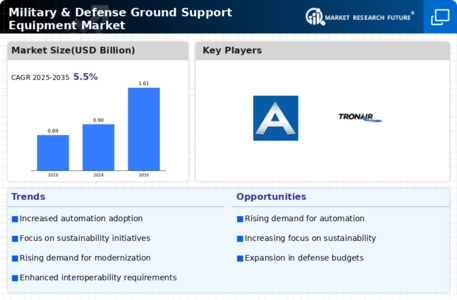
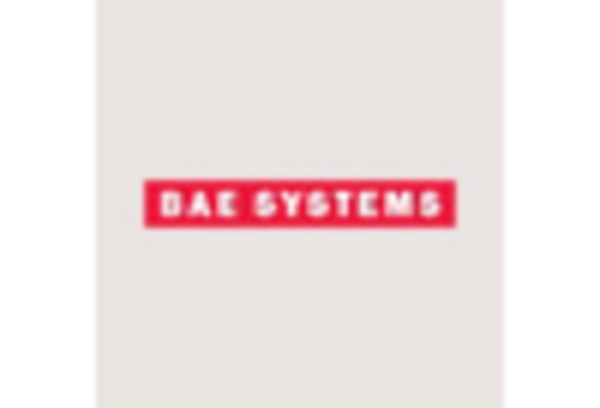
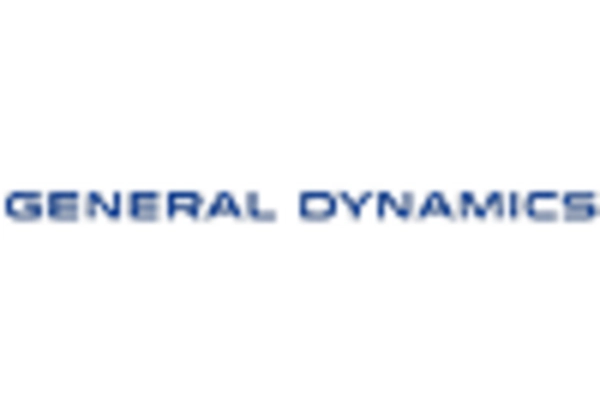
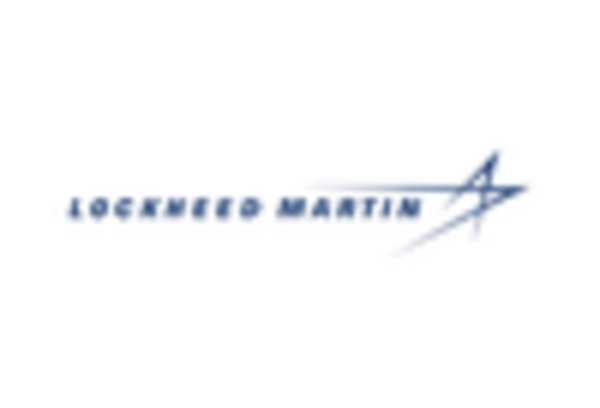

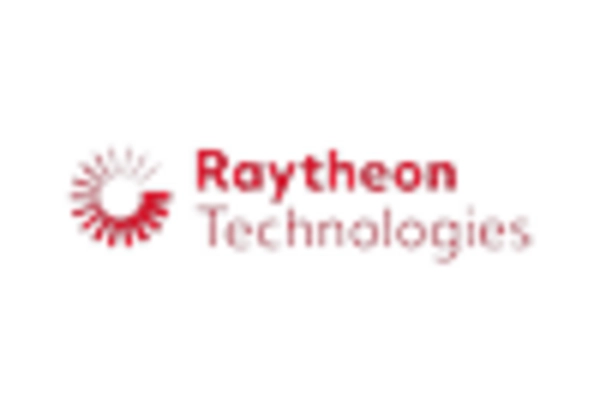


Leave a Comment